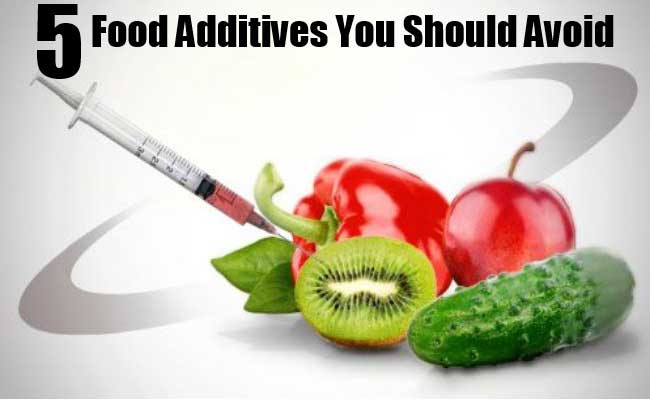
Neon style hair dyer Beauty Skins Daisy
November 27, 2012
Fashion Bloggers Provide Inspiration For Collab
April 26, 20161. High-Fructose Corn Syrup (HFCS)
While claims that HFCS is just as worse as sugar may exist, this is far from the truth. HFCS contains glucose and free-form monosaccharides of fructose, which are not biologically the same as sucrose. Sucrose (sugar) has glycosidic bond that combines glucose and fructose that make it harder to break down in the body.
The liver is the only organ in the human body that can handle the metabolism of fructose, which the liver metabolizes directly into fat, the same way it does with alcohol. As such, the fructose is stored in fat cells and this leads to malfunction of the mitochondria causing the risk of obesity and other related diseases.
In research on mice, female mice were given a diet containing corn syrup that contained 25% calories and others a diet of table sugar that contained 25% calories. Those fed with the corn syrup had 26% fewer offspring and twice the death rate compared to those fed with table sugar.
A healthier measure is to limit fructose intake from fruits to no more than 15g and opt to take water while avoiding processed foods and beverages because they have hidden sources of fructose.
2. Butylated Hydrozyttoluene (BHT) & Butylated Hydroxyanisole (BHA)
BHA is used as food preservative used in nut mixes, dehydrated potatoes, chewing gum, breakfast cereals, meat, chips, butter spread, beer, and popcorn among many other foods. Butylated hydroxyanisole (BHA) has been found to alter behavior and distort the brain neurological system as well as a potential cancer risk.
Butylated hydroxyanisole can cause hyperactivity and allergic reactions. According to the International Cancer Agency, BHA is a possible human carcinogen, and the California Proposition 65 lists BHA as a known carcinogen. While the U.S. considers it a GRAS additive, some parts of the EU and Japan have banned the use of BHA is all foods and the U.K. banned its use in the manufacture of infant foods.
BHT is not that different from BHA. It is also used as preservatives with some manufacture using both preservatives. BHT may not be categorized as a carcinogen like BHA, it nonetheless has been associated with cases of formation or growth of tumors in animals.
3. Monosodium Glutamate (MSG)
Chinese foods are known to use MSG as a flavor enhancer. However, many different processed food products including meats, salad dressings, frozen dinners and snack chips contain this flavor enhancer.
The danger in the use of MSG is that it actually made up of 78% free glutamic acid. The human body uses free glutamic acid as a neurotransmitter in the nervous system, pancreas, the eyes and the brain as well as other organs to start certain body processes.
4. Potassium Bromate
Bromide is a common ingredient used in flour products such as hotdog buns, bread, and hamburger buns. Bromated flour is enhanced with potassium bromate. Bromide is an endocrine-disrupting chemical. The use of potassium bromate in the making of commercial flour products in Western cultures has been linked with the overload of bromide in many people.
Studies on potassium bromate have linked it with thyroid problems, cancer, kidney damage, gastrointestinal discomfort, and nervous system damage. The International Cancer Agency categorizes potassium bromate as a possible carcinogen, and Canada, the EU, and China banned its use in foods.
5. Artificial Colors
Each year, 15 million pounds of artificial food dyes are used in the production of foods in the USA and only eight different varieties account in that amount. In 2010, the EU (European Union) started labeling foods that contained the artificial food dyes with warning labels that stated such foods may cause an adverse effect on the attention and activity in children.
In 2009, growing health concerns across Britain prompted the government to request food manufacturers to stop using most artificial food dyes in their foods. In America, nine of the approved food dyes have been associated with health issues ranging from hyperactivity, cancer, and allergy reactions, which are results of studies done by the chemical industry.
6. Synthetic Trans Fats
Partially hydrogenated vegetable oils, vegetable shortening, and margarine contain synthetic trans fats that promote inflammation, a known indicator of many chronic diseases.
The synthetic fats have been associated with cases of decreased immune function, heart diseases, cancer, diabetes, reproduction problems, stroke, and other health complications. The FDA says that avoiding the consumption of these fats can help prevent over 7,000 heart disease and 20,000 heart attacks, annually.
7. Sodium Sulphite
Sodium Sulphite is a common food preservative. People allergic to it tend to have cases of breathing complications, headaches, and rashes with service cases sometimes leading to death.
8. Artificial Sweeteners
According to research was done on sugar and artificial sweeteners, it was found that foods with a sweet taste enhance a person’s appetite, irrespective of their caloric content and those with artificial sweeteners caused a higher weight gain than those with natural sugar.
While nearly all artificial sugars pose a similar risk, the most notable type is aspartame and other types worth mentioning include sucralose, acesulfame potassium, and saccharin. The risk posed by the consumption of artificial sweeteners goes beyond weight gain, as is why these should be avoided.
Aspartame contains amino acids that attack body cells breaching the blood-brain barrier and attacking the brain cell, which leads to excitotoxicity that is the overstimulation of a toxic cellular, something similar to MSG (monosodium glutamate.
9. Sulphur Dioxide
Sulphur additives are toxic. The U.S. banned its use in vegetables and raw fruits. Some of the cases linked to the consumption of Sulphur include low blood pressure, anaphylactic shock, and bronchial problems.





